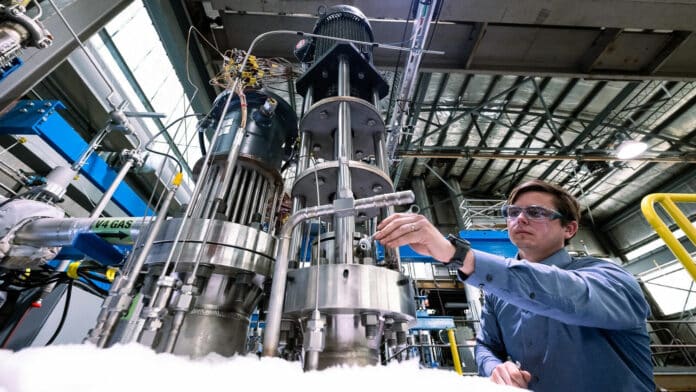Machine learning technology has emerged as a powerful tool with the potential to revolutionize various industries. By automating routine tasks and providing insights that were previously impossible to obtain, machine learning is helping organizations to operate more efficiently, improve decision-making, and create new opportunities for growth and innovation.
As technology continues to evolve and improve, it is likely that we will see even more exciting applications emerge in the years to come.
Now, a team of scientists at the U.S. Department of Energy’s (DOE) Argonne National Laboratory has shown how cutting-edge machine learning technology can enhance nuclear reactor security and efficiency for a sustainable tomorrow.
Researchers applied machine learning techniques to the sodium-cooled fast reactor (SFR), which uses liquid sodium to cool its core. This enables it to efficiently generate carbon-free electricity by splitting heavy atoms.
SFRs have the potential to revolutionize power generation and contribute to the reduction of nuclear waste, but they are not currently employed for commercial purposes in the United States. One of the main challenges is to maintain the purity of their high-temperature liquid sodium coolant and prevent it from corroding or clogging the system.
To address these challenges, Argonne scientists designed a new game-changing machine learning (ML) system.
“By harnessing the power of machine learning to continuously monitor and detect anomalies advances the state of the art in instrumentation control,” said Alexander Heifetz, principal nuclear engineer at Argonne and co-author of the article. “This will create a breakthrough in the efficiency and cost-effectiveness of nuclear energy systems.”
The team developed a machine learning model to continuously monitor the cooling system at Argonne’s Mechanisms Engineering Test Loop (METL) facility. The model is equipped to analyze data from 31 sensors that measure fluid temperatures, pressures and flow rates, and controller signals.
METL is a unique experimental facility designed to safely and accurately test materials and components for use in reactors. This facility also trains engineers and technicians and now ML models that could help operate and maintain these reactors.
An advanced system equipped with machine learning has the potential to improve monitoring capabilities and prevent anomalies that could potentially disrupt the functioning of an actual reactor.
The team also demonstrated the model’s capacity to detect operational anomalies swiftly and accurately. They put the model to the test by simulating a loss-of-coolant anomaly, which causes a sudden spike in temperature and flow rate. Within approximately three minutes of its initiation, the model detected the anomaly, highlighting its effectiveness as a safety mechanism.
Lastly, the research points toward significant improvements for future models. Currently, the model detects any spike that exceeds a predetermined threshold. However, this could cause false alarms due to incidental spikes or sensor errors. Recognizing that not all spikes are anomalies, the team plans to refine the model to distinguish between genuine process anomalies and random measurement noise.
“Although we’re using the unique capabilities of METL to develop and test our algorithms in a liquid metal experimental research facility, there is potential to see applications in advanced reactors,” said Heifetz in a statement. “That can provide more carbon-free energy in the future.”
Alexandra Akins, a research aide at Argonne, said, “Our research on anomaly detection using machine learning enhances the promise of nuclear energy.”
Journal reference:
- Alexandra Akins, Derek Kultgen, and Alexander Heifetz. Anomaly Detection in Liquid Sodium Cold Trap Operation with Multisensory Data Fusion Using Long Short-Term Memory Autoencoder. Energies, 2023; DOI: 10.3390/en16134965
